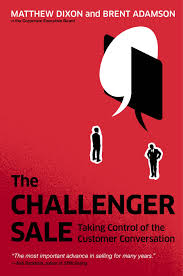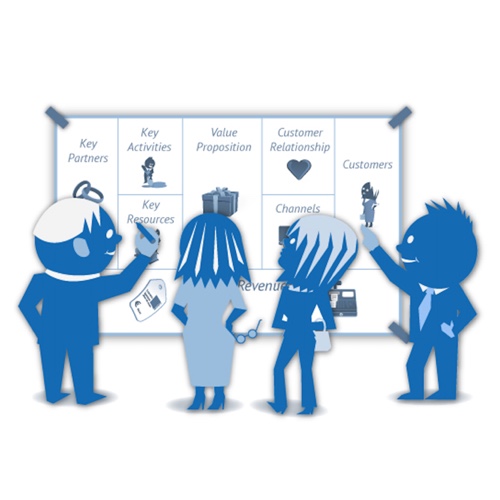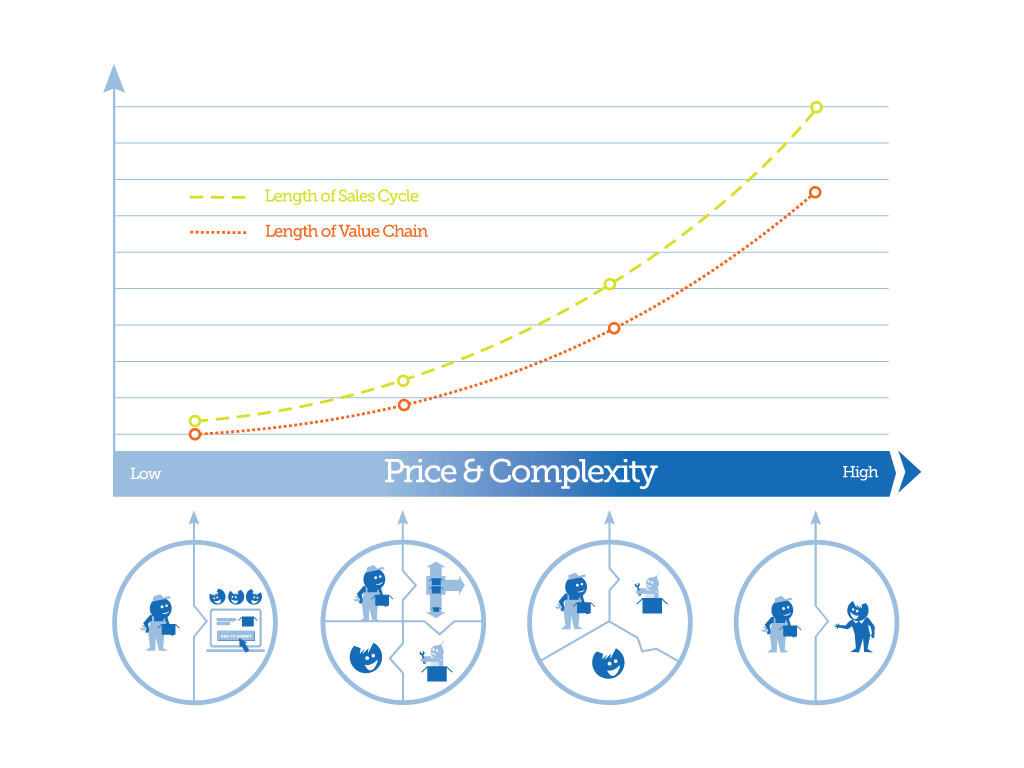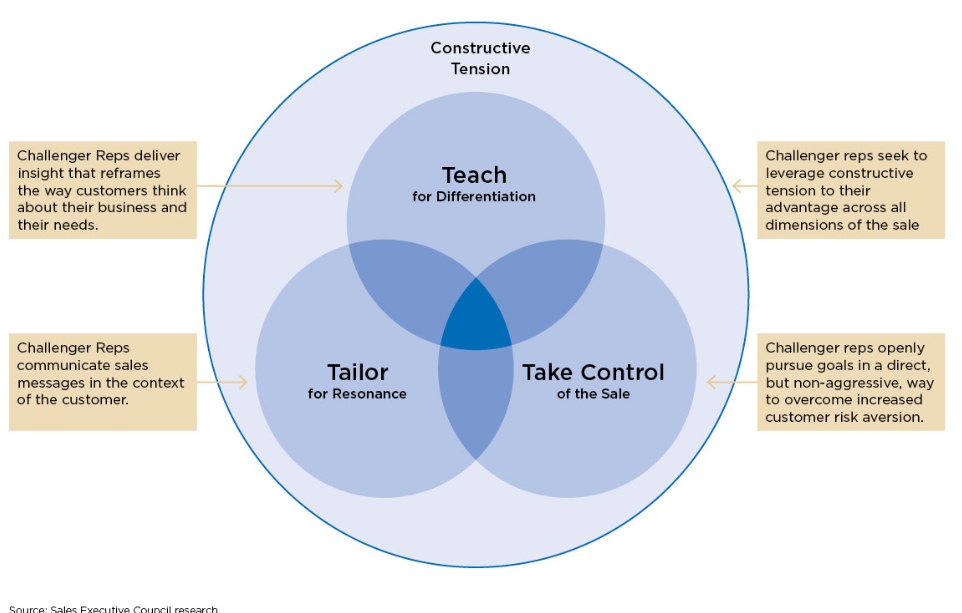The Challenger Sale: How to Take Control of the Customer Conversation
 In these days of Business Model Generation, Customer Value Propositions, Value Chains, Balanced Score Cards and what have you, we often forget that for many companies the revenue comes from orders closed by salespeople in the field.
In these days of Business Model Generation, Customer Value Propositions, Value Chains, Balanced Score Cards and what have you, we often forget that for many companies the revenue comes from orders closed by salespeople in the field.
Don’t get me wrong.
There is a dramatic need for solid business models and clear value propositions directed at precisely defined customer segments. There is a dramatic need for balanced scorecard type leadership and management formats that ensure that resources are applied to support the same strategic direction of the entire organization.
My point is that as we struggle to get all these concepts in place we tend to forget that there still is something called operational sales. Sales is what happens in the field when our salespeople are communicating with our current and potential customers with the objective of getting our stuff sold = generate revenue (from where we make gross margin and take profits).
The new book, “The Challenger Sale: How to Take Control of the Customer Conversation“, by Matthew Dixon and Brent Adamson provides great insight into what makes some salespeople much more productive than others. Even in tough times such as now (the aftermath of the financial crisis in 2007-08), certain salespeople continuously outperform everybody else.
A: Who are these salespeople? They are called “Challengers”
B: What is it that they do differently? Read on to learn what they (and their companies) do differently.
C: Can these skills be learned? Yes!
Business models and concepts
 With the birth of software-driven industries, we have experienced the appearance of the so-called “no-touch” business models. “No-touch” business models are based on no human interaction with our customers. Customers find us on the Internet, they make themselves acquainted with our services, they place orders using their credit card and the service is delivered instantly through a download or a cloud-based format. Most of these business models have a recurring element and preferably also some stickiness ensuring that the customers do not churn.
With the birth of software-driven industries, we have experienced the appearance of the so-called “no-touch” business models. “No-touch” business models are based on no human interaction with our customers. Customers find us on the Internet, they make themselves acquainted with our services, they place orders using their credit card and the service is delivered instantly through a download or a cloud-based format. Most of these business models have a recurring element and preferably also some stickiness ensuring that the customers do not churn.
It seems that some people (entrepreneurs, intrapreneurs and investors) believe that the “no-touch” based business models will replace the “high touch” based business models, thus completely making the need for field salespeople obsolete.
Recent examples of “no-touch” business models are Google, 37signals, Atlassian, XERO and the entire App industry.
The salesperson in today’s business environment
While there certainly are markets for “no-touch” based and “low-touch” based (telesales/call centre) business models, the “high-touch” based business models with salespeople in the field will never go away.
Which type of channel “touch” your business model requires is determined by the factors illustrated below

The “touch” required is a function of the price and complexity of what you deliver twisted by the need for customization and the newness of you and your solution. Basically this gives us four “touch” categories:
“no-touch”
These are very simple and inexpensive solutions to known needs with no need for customization, which the customer cannot do himself.
Such solutions are sold directly through the Internet.
“low-touch”
These are simple standard solutions to known needs with no or very little need for customization.
Such solutions are typically sold directly through the Internet, though a call centre approach (inbound and outbound) and/or through a network of distributors and resellers building on the established relationships with their customers.
“medium-touch”
These are industry specific solutions to known needs with some need for customization and “implementation” services.
Such solutions are sold through a network of resellers building on the established relationships with the customers and providing the reseller the opportunity of making a business out of adding value to the solution.
“high-touch”
These are industry specific solutions to known needs with substantial customization requirements and other “implementation” services.
Such solutions are sold directly to the customers.
Where do we need in-field sales people?
In the low, medium and high “touch” channel formats, there is a need for operational sales people. In the “low-touch” situation they may be located in a call center, but in the “medium-touch” and “high-touch” situations they are operating in the field. As sales get more complex the difference between the Challenger and the other types increases dramatically. The difference in performance in the low and medium touch segments is approx. 60%. In the high touch segment the difference in performance is 200%.
The Challenger
So who is this challenger who apparently is so much more productive than anyone else?
Dixon and Adamson’s book sorts all sales people into five groups:
- The Hard Worker
- The Problem Solver
- The Challenger
- The Relationship Builder
- The Lone Wolf
While most sales people focus on building customer relationships and meeting customer requirements, the challenger focuses on pushing customers’ thinking, introducing new solutions to their problems and illuminating problems that customers overlook. They teach, tailor and take control. The challenger changes the customer’s perception of his own situation, changes the customer’s requirements and leads the customer to his/her solution.
Leading “to” and NOT leading “with”
The book explains how The Challenger uses her domain insight and industry experience to lead the potential customer to her solution. Her questioning approach will teach the potential customer new insights and she will control the sales situation leading the customer to her solution. The Challenger is a “management consultant” with a solution to sell.
Can we make Challengers?
The book claims we can.
If you turn your entire company into a “Challenger” organization, then you can transform the bulk of your sales force to become Challengers. The book actually explains what it requires to make this transformation. Creating a Challenger organization will affect all organizational functions.
A Challenger works on three levels with the customers.

Source: http://www.executiveboard.com/exbd-resources/content/challenger/ebook-graphics/index.html
If a company systematically supports the Challenger approach with its leadership, its solutions, its documentation, its training, its coaching and its’ management, then you can turn most salespeople into successful Challengers and achieve an attractive revenue/expense rate.
The book claims that Challengers are made and not just born. Systematically supporting “the teaching”, “the tailoring” and the “taking control” will breed Challenger behaviour in your sales organization.
Breeding Challengers is about organizational capability, not just the skills of the individual sales reps.
Building a Challenger sales force is an ongoing journey – not an overnight trip. Creating productive sales organizations is not for people looking for the low hanging fruit.
Quote: The Challenger model … isn’t a bolt-on software update – it’s a new operating system for the commercial organization. Those looking for a quick win would be well advised to look elsewhere.”
Our perspective on the book

5 out of 5 stars
“The Challenger” book is a must-read for all executives in the software industry who operate with a business model requiring salespeople to convince customers to purchase their products and services.
The book is very well written, very well structured and very comprehensive. It actually takes the reader all the way from the general principles to practical implementation.
This makes the book “thick.” Although it is complemented with numerous illustrations it is a book with many words. Probably too many words for most “busy” executives. However, we strongly recommend taking the time “off” to read the book.
The Challenger approach is the way to go. The approach will bring much more value to our customers and be a much more rewarding and dignified way to work for any sales rep.








